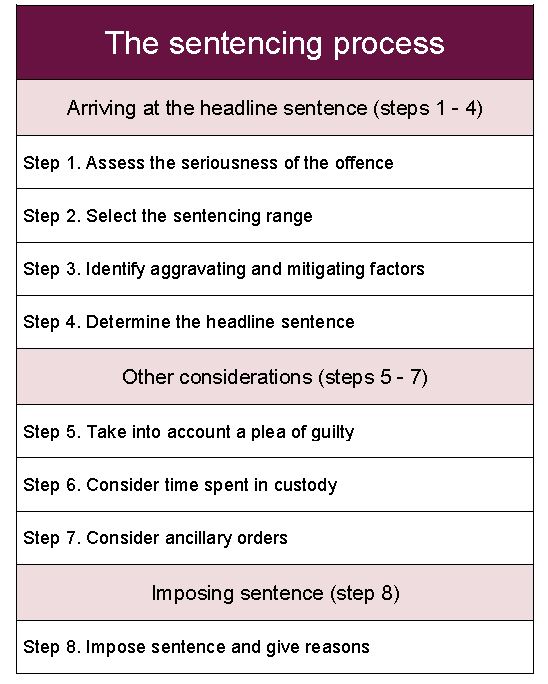Sentencing process guideline approved

The High Court of Justiciary has approved a new sentencing guideline developed by the Scottish Sentencing Council, aimed at increasing public knowledge and understanding of the sentencing process in Scotland.
The sentencing process guideline sets out an 8 step guide which courts should follow in order to reach a sentencing decision, including some of the factors which may be taken into account.
Following extensive research and consultation with the public and judiciary, the Scottish Sentencing Council submitted the guideline to the High Court for approval last month.
In a hearing held this morning, three judges of the High Court the Lord Justice General Lord Carloway, Lord Menzies and Lord Woolman approved the guideline and confirmed that it will come in to effect for all courts in Scotland from Wednesday 22nd September 2021.
Sheriff Principal Craig Turnbull, Chair of the Scottish Sentencing Council’s Sentencing Process Committee said: “The approval of the sentencing process guideline is a significant milestone in the Council’s work to make sentencing more open and transparent in Scotland. For the first time people will be able to see the steps a court follows in order to arrive at an appropriate sentence and some of the factors which are taken into account.
“The Council believes this guideline will promote a consistent approach to sentencing and will enhance understanding of how sentencing works in Scotland’s courts. The approval of the sentencing process guideline also paves the way for specific offence guidelines which the Council is currently developing.
“We would like to thank all those who have aided the Council in developing this guideline, in particular members of the judiciary and others who have been involved in research to inform the development of the guideline, as well as the invaluable contribution from the individuals and organisations who responded to our consultation.”
The eight steps of the sentencing process are split into three categories; arriving at the headline sentence (steps 1-4); other considerations (steps 5-7) and imposing sentence (step 8).
The eight steps are:
Step 1: Assess the seriousness of the offence (Determined by the culpability of the offender and the harm caused)
Step 2: Select the sentence range (This is the range of sentences within which the appropriate headline sentence for the offence appears to fall, having regard to the assessment of seriousness at step 1)
Step 3: Identify aggravating and mitigating factors (factors which may increase or reduce the sentence)
Step 4: Determine the headline sentence (the sentence before any reduction for a guilty plea, or time already spent in custody is made)
Step 5: Take into account a plea of guilty (courts are required to do this by law)
Step 6: Consider time spent in custody (a custodial sentence may be reduced for any time already spent in detention)
Step 7: Consider ancillary orders (these are orders in addition to the sentence, such as a non-harassment order which could be made in a domestic abuse case)
Step 8: Impose sentence and give reasons (The court should always be satisfied that the overall sentence, taken together with any ancillary order to be imposed, is fair and proportionate.)
The Scottish Sentencing Council has a remit to increase public knowledge and awareness of sentencing in Scotland. As well as developing sentencing guidelines, the Council also provides popular resources on its website including a jargon buster and ‘If you were the judge’ case scenarios, which allows people to select the sentence after considering different factors in a particular case.
This is the second sentencing guideline to be approved by the High Court and is intended to be read alongside the Principles and purposes of sentencing guideline. A third general guideline - for sentencing young people - is currently being finalised and is scheduled to be submitted to the High Court later this year.
Later this year the Council will publish its third Business Plan including its proposed work programme for the next three years. It will also provide an update on the work currently being carried out by the Council, in particular the development of guidelines in respect of death by driving offences and sexual offences involving rape, sexual assault and indecent images of children.
The guideline is available to view here
The impact assessment is available to view here

